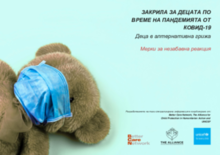Displaying 411 - 420 of 2214
This study examined differences in childhood adversity, child protection involvement, and offending among crossover children by neurodisability status.
This quantitative study investigated how selected attributes of children (e.g., gender) and their microsystems (e.g., caregiving settings) related to the receipt of special education among a sample of 1855 child welfare-involved youth from the U.S. National Survey of Child and Adolescent Well-Being II.
Using a scoping review framework, the authors of this study sought to take stock of the state of the science of the programs and interventions (PIs) currently available for young people who age out of foster care.
This study examined the impact of homelessness, foster care, and adverse childhood experiences (ACEs) prior to 12th grade on the development of three common Substance Use Disorders (SUDs) during young adulthood
This study reports the perspectives of college students with foster care histories and self-identified mental health concerns about how these factors relate to their post-secondary academic experiences.
The aim of this study is to investigate out-of-home placement rates and child outcomes of home-visiting interventions.
This study explored the effects of the factors on independent living readiness among youth under out‐of‐home care. Specifically, this study focused on the effects of caregivers' autonomy support and psychological capital on independent living readiness through personal growth initiative.
This study uses interviews with 20 youth formerly in foster care who exhibit better-than-average outcomes to explore contextual aspects of resilience during emerging adulthood, elucidating how both relational and organizational support contribute to their resiliency.
This article provides a conceptual depiction of how schools and treatment foster parents partnerships can be formed and maintained.
Целта на тази „Специализирана информация“ е да подпомогне работещите в сферата на закрила на детето и правителствените служители в незабавния им отговор на проблемите, пред които се изправят децата, които са в риск от разделяне със семейството или в алтернативна грижа по време на пандемията от Ковид-19.


